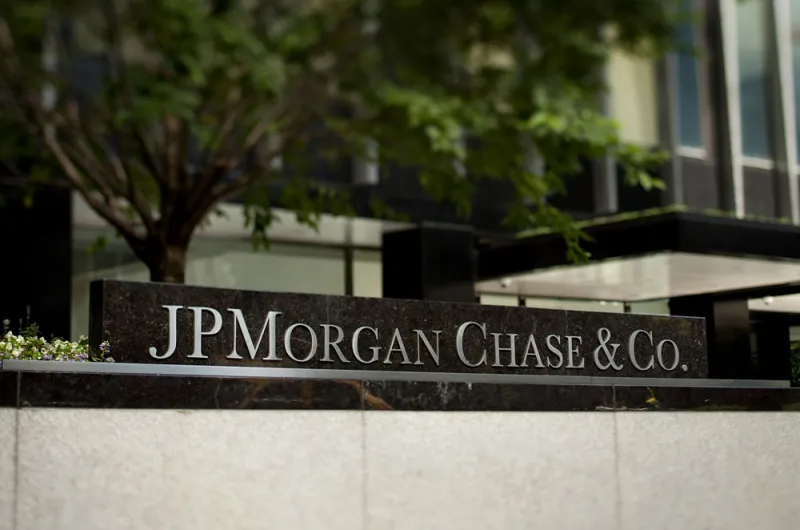The recoveries and re-openings of economies around the globe ebbed and flowed last year as workforces returned to offices — and then left again amid new Covid-19 variants and lockdowns.
But if 2020 was a year marked by uncertainty — from the pandemic to subsequent market volatility and upended work environments — it could be argued that 2021 was much of the same, with one exception.
“For sell-side research and, perhaps for the rest of humanity, it was a year of resilience,” said Dan Dowd, global head of research at UBS. “There was certainly a hope towards the end of 2020 that 2021 would be quite normal, which it clearly wasn’t.”
With the majority of client interactions continuing to happen virtually thanks to Zoom or the phone, and many analysts now back to working from home due to the Omicron variant, the sell-side industry is both firmly planted in this “new normal” and looking to the future. “In 2021, the research process started to take the pandemic as much more a part of what’s going on as opposed to the only thing that’s going on,” he said.
While there was great progress toward economic recovery and re-opening around the globe, “much remains to be done as the recovery was uneven, incomplete, and often interrupted by new virus outbreaks and scares,” observed Marko Kolanovic, chief global market strategist and co-head of global research for JPMorgan Chase & Co.
“The performance of various investment strategies was often thrown off by new Covid waves, which led to market volatility, movements in the yield curve, and style rotations,” he added. “This environment yielded opportunities to use our analytical expertise and toolkit to come up with answers, despite being in uncharted waters in many respects.”
It’s often said that smooth seas never make a skilled sailor, and the uncharted waters of 2021 provided many opportunities for global research providers to shine. The only question: which firms proved the most invaluable to the buy-side?
At the top of the list: JPMorgan. After reclaiming the crown last year, the New York-based firm repeated its No. 1 finish in Institutional Investor’s 2021 ranking of the Global Research Leaders, in which research providers are stacked up based on their total number of equity and fixed-income analysts ranked by II globally.
Over the past year, investors have been asked to vote for their favorite research providers in a cadre of II surveys across equities and fixed income as well as developed and emerging markets. The subsequent results were published across eight major rankings: the All-America Research Team; the All-Asia Research Team; the All-China Research Team; the All-Europe Research Team; the All-Japan Research Team; the Emerging Europe, Middle East & Africa Research Team; the Latin America Research Team; and the Global Fixed-Income Research Team.
Across these surveys, JPMorgan once again increased its number of total positions, improving to 269 this year from 2020’s 256.
When asked to sum up the past year, Hussein Malik, co-head of global research for JPMorgan, said it has been a “rewarding” one for sell-side research. “It is during difficult, tumultuous times that we have the opportunity to provide the most value to our clients,” he added.
BofA Securities once again placed second and also improved its number of positions to 249. The runner-up also once again captured the most first-place team finishes with 81 —17 more than JPMorgan’s total.
BofA’s head of global research Candace Browning credits her firm’s success to a collaborative approach across a growing number of sub-sectors and industries. “What makes a top global research team, obviously, is the talent of the individual analysts. That is key,” she said. “But what makes a great research department is when they can all not only come up with their own original, anticipatory ideas, but also work together to present a really cohesive, impactful message to the investor client.”
Take, for example, an ecosystem like electric vehicles, which represents many different sub-sectors and industries and analysts involved. “You need people working together and challenging each other to be better,” Browning said. “It requires you to be not only more collaborative, but more organized and thoughtful.”
As more companies continue to use technology as a core part of their business model — in such areas as software and biotech — Browning believes the US. in particular is going to continue to see the growth of sub-sectors. “That presents some challenges in terms of managing large teams,” she said, “and it presents synergies as well.”
According to Browning, BofA is continuing to focus on large thematic ideas including digital assets and cryptocurrencies, as well as building out its team around ESG, which it started doing in 2015. “We were one of the first on the street to really get involved in ESG research and the opportunity just continues to expand,” she said.
When it comes to crypto, meanwhile, the firm isn’t focused on forecasting the price of Bitcoin. “That’s not what we are doing,” Browning said. “We’re writing about the opportunity set that’s being created around this new technology of the blockchain. That’s really what the strategist’s job is.”
“As someone once explained it to me: Think about the Alaska gold rush. We’re not trying to find the gold, we’re just trying to sell pickaxes,” she added.
Following BofA in the ranking of Global Research Leaders is Morgan Stanley, which shot up from last year’s fifth place finish to round out the top three global research firms. UBS was once again fourth, with Citi falling from third to the fifth spot.
As for Morgan Stanley’s approach: “I think it’s very straightforward in principle, and complex in terms of execution,” said Simon Bound, global director of research at the firm. “The most important factor is having long-tenured analysts that the buy-side wants to speak to.” More than half of Morgan Stanley’s managing directors have spent their entire careers at the firm.
“Secondly, we bring a global perspective to the investment debate,” he added. “There are fewer banks who can do this now.”
Take for example Covid-19, which has long-reaching implications from region to region and sector to sector, from increasing trade tensions with China to supply chain frictions and related debate around inflation. “Unless you have a global platform with a credible offering in each region and asset class, you can’t tackle those complex issues,” Bound said, adding that a firm culture of collaboration is also paramount.
All the top firms reported that even from the heights of 2020, client interaction and engagement were up again this year — though not as drastically — along with a record level of initial public offering activity and the growth of hedge fund platforms.
This has further solidified sell-side research in the financial ecosystem a few years after MiFID II —regulation that unbundled sales from trading — was set to disrupt or minimize it. “There was a cynical view around MiFID II that the buy side didn’t need the sell side,” Bound said. “We believe we are very important to our clients’ investment processes.”
While the pandemic saw the rise of the retail investor and some speculative bubbles, JPMorgan’s Kolanovic expects to see a greater focus on fundamentals as markets normalize. “Investors will continue to place value on high-quality content and advice from the sell side,” he said. “But the sell side will have to evolve with clients’ needs.” This includes greater connectivity between top-down and bottom-up research; evolving relationships across markets, sectors, and geographies; and the continued rise of data as a key form of content.
“Overall, investors have to contend with an increasing range of issues that impact markets — geopolitical tensions, macro variables such as inflation and rates, as well as tail risk events,” Kolanovic added. “Researchers need to continually evolve their skill set to understand and fold in new developments into their worldview and analysis.”
At UBS, data continues to be the scaffolding the firm is building its offering around, as proven by another year of heavy investment in and innovation by its Evidence Lab. “There’s no question that the opportunity and how sell-side research will evolve is going to be driven by data,” Dowd said. “Our Evidence Lab has enabled us to have an absolutely enormous amount of data that our analysts use to address the questions that will move the stocks.”
Dowd said UBS had more than 4,200 deliveries of data sources to research analysts in 2021 and more than 50,000 external client visits to its portal, which he believes signals a bellwether for future client consumption and interactions. “As we start to allow more and more of that data to be provided to our clients, the one that will be the growth area is advising clients on the use of the data to answer the questions they care about,” he said. “We’re actually very excited about where this is going and this is happening regardless of what happens with Covid.”
Morgan Stanley’s Bound believes the industry needs to look carefully at what efficient digital distribution looks like in the future as analysts travel less and client consumption evolves. The firm’s own podcast, “Thoughts on the Market,” has ballooned from 50,000 downloads a month two years ago to more than 900,000 a month today.
“It shows that clients are going to be consuming research in a different way,” he said. “It’s good for us and it’s good for them. The future is bright.”







